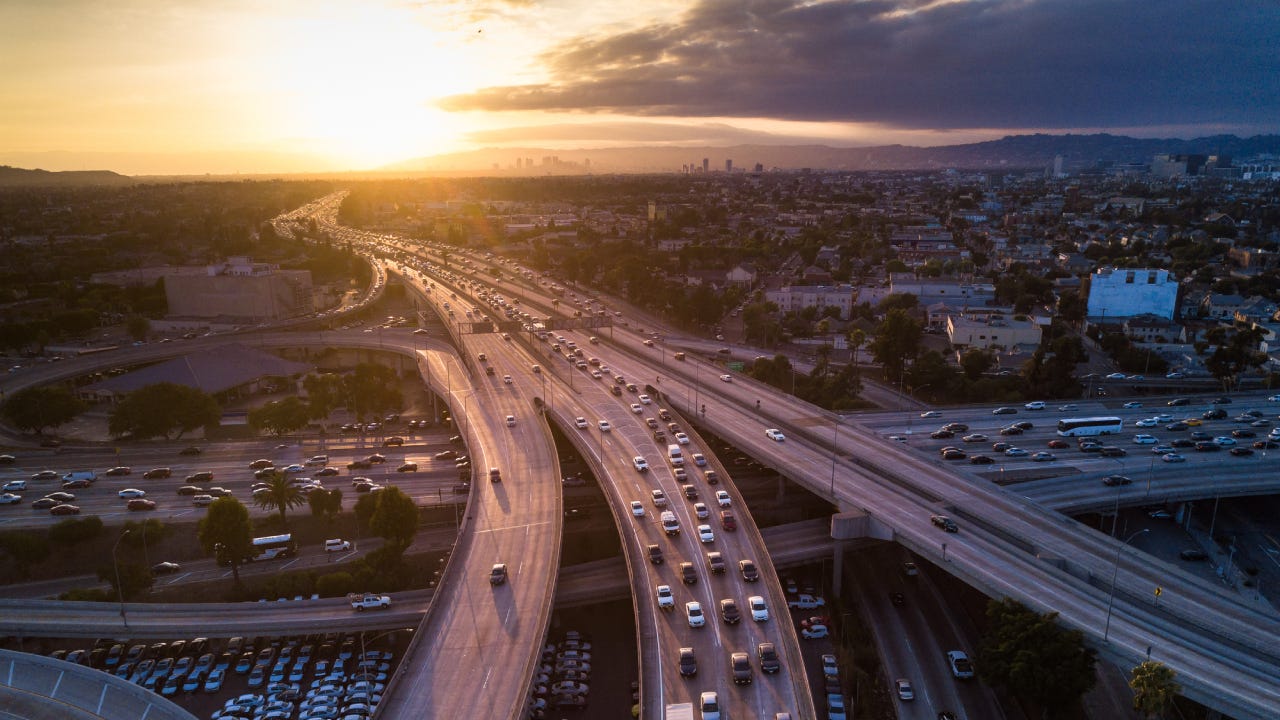Is car ownership becoming a luxury Americans can’t afford?

The Bankrate promise
At Bankrate, we strive to help you make smarter financial decisions. To help readers understand how insurance affects their finances, we have licensed insurance professionals on staff who have spent a combined 47 years in the auto, home and life insurance industries. While we adhere to strict , this post may contain references to products from our partners. Here's an explanation of . Our content is backed by Coverage.com, LLC, a licensed entity (NPN: 19966249). For more information, please see our .
Vehicle ownership has long been a part of the American dream. One that, for the most part, was attainable and even essential for many people to participate in the workforce. However, rising insurance rates, high vehicle prices and pricey repairs are putting car ownership out of reach for many consumers.
How much does it cost to own a car?
The cost of car ownership has changed rapidly over the last few years. While inflation is slowing down and gas prices can fluctuate, there are some baseline costs that drivers are locked into for the duration of owning their car.
Recurring vehicle expenses vary greatly depending on the type of car you select, where you live, your driving record, commuting costs and many other factors. The average monthly cost of new vehicle ownership is $1,015 as of 2023, according to AAA. This is a 13.5 percent increase from 2022, and many Americans are struggling to fit this rising cost into their budgets. “I never expected to have to make the kind of changes I did just to afford a car.” said Janelle Sosnowski, a single mother of two and full-time insurance agent.
With active kids, I liked having a bigger car, but I needed to downgrade and move into a small vehicle with better gas mileage. I even changed my work schedule to reduce the annual mileage on my insurance and lease contract.
— Janelle SosnowskiLicensed insurance agent
Buying a car
When considering the cost of vehicle ownership, the price of the car itself is the first thing most people think of. Over the past few years, the impact of inflation and supply chain disruptions significantly increased the cost of owning a car. While Kelley Blue Book reports that the cost of new cars is currently on a rapid decline, as of January 2024, non-luxury vehicle prices still averaged $44,052. This downward trend is good news for consumers, but keep in mind that while these prices are lower than they were a year ago, they are still much higher than the average pre-pandemic cost.
Aside from the MSRP, the out-the-door price for your vehicle can quickly add up, and many additional costs are unavoidable. All but five states have sales tax plus additional potential local taxes. While taxes on used cars aren’t paid to the dealership or prior owner, you will likely need to pay your vehicle tax when you register your car with the Department of Motor Vehicles. Additionally, some states have a recurring property tax that drivers must pay yearly when they own a vehicle.
When buying a car from a dealership, you will likely see several dealer fees tacked on to your invoice. Some are mandatory and include tax, title and licensing fees, but others are negotiable. Finally, the interest rate of your auto loan will be another significant factor in your car purchase cost. The amount of your down payment, your credit score and whether you buy a new or used car are some aspects that impact your interest rate. As of February 21, 2024, the average interest rate for a 48-month loan on a new car was 7.81 percent.
Car insurance costs
Car insurance is a commonly overlooked expense when it comes to vehicle ownership. The national average cost of car insurance is $2,542 per year for full coverage and $740 per year for minimum coverage as of January 2024. Your personal rating factors, including location, vehicle type, driving record and, in most states, age and credit history, can all impact your coverage costs. For example, drivers with an accident on their record pay, on average, 41 percent more for full coverage insurance than drivers with a clean record.
Car insurance premiums are expected to continue increasing throughout 2024, so you may want to keep an eye out for your renewal letter to be aware of any rate hikes.
Car maintenance
Between high purchase prices and even higher interest rates, drivers are keeping their cars for longer periods — the average age of private passenger cars on the road in 2023 is 13.6 years old, according to S&P Global Mobility. Regular car maintenance can keep your vehicle running for longer, but mechanic services are not immune to inflation and supply chain issues. According to Kelley Blue Book, the average American spends over $545 per year on car repairs.
Aside from car maintenance costs, the price of unexpected vehicle repairs and car insurance deductibles can be another budget-busting expense. More than 1 in 5 Americans have no emergency savings, meaning smaller expenses like new tires or a brake pad replacement could put many drivers under financial strain.
Congestion pricing and rising tolls: unexpected ways car ownership may get more expensive
With return-to-office mandates becoming more common, many workers are returning to the daily commute. In addition to gas costs and wear and tear on your vehicle, tolls are also trending upward around the country. The Pennsylvania Turnpike Commission increased tolls by 5 percent as of January 7, 2024. Washington State adopted a $15 maximum toll rate for State Route 167 commuters as of March 1, 2024.
One city getting a lot of attention for its bold new congestion pricing strategy is New York. To reduce vehicle congestion, limit emissions and promote public transportation use, the Manhattan Transit Authority created the Central Business District Tolling Program, which may charge drivers up to $15 to drive above 60th St. Currently, the city is accepting public comments on this change until March 11, 2024. This proposed strategy demonstrates how the cost of owning a vehicle can change at any time and in ways most drivers can’t anticipate.
Can I afford to be a car owner in 2024?
The cost of car ownership is rising in the U.S., yet 45 percent of Americans have no access to public transportation. For most Americans, having a car is a necessity, but the question of whether or not you can afford to own a car depends on your financial situation — and adjusting your expectations may help. Consider buying a used car over a new car or making changes to improve your credit before applying for an auto loan.
The rising cost of car ownership may hit Gen-Zers the most since they are also combating high housing costs without the experience or financial safety net older generations may have. Data shows that many Gen-Zers have delayed getting a driver’s license and instead opt for public transportation and ridesharing services over owning a car.
Drivers under the age of 25 can save money by staying on their parents’ insurance policy until they move out on their own. For example, an 18-year-old with their own full coverage auto insurance policy pays on average $7,499 per year, compared to $4,797 per year when listed on their parents’ policy.
If public transportation is an option in your area, you could save significantly by taking advantage of it. The American Public Transportation Association (APTA) states that Americans could save $13,000 per year by choosing public transportation instead of owning a car. Even if you do own a car, choosing public transportation or carpooling a few days a week could cut down on your overall costs of vehicle ownership.
Making car ownership more affordable
If you are in the market for a new car or are trying to manage the costs associated with the vehicles you already own, there are steps you can take to make owning a car more affordable.
If you’re considering buying a car:
- Get car insurance quotes for various cars to find which makes and models fit within your insurance budget.
- Improving your credit score may help you acquire a lower interest rate on your auto loan and save money on car insurance in most states.
- Compare auto loans with traditional banks, credit unions and online lenders to find affordable interest rates and terms with low fees.
- Research reliability and average repair costs for the models you’re considering. Vehicles with domestically-made parts are usually cheaper to repair and insure.
If you already own a car:
- Regularly compare car insurance quotes and evaluate your coverage selections to find the cheapest car insurance for your coverage needs.
- Driving safely to avoid tickets and accidents can help you sidestep unnecessary costs and fees, plus help stabilize your insurance premiums.
- Consider switching to a pay-per-mile or usage-based insurance if you don’t drive a lot or have one vehicle that sees significantly less mileage.
- Keep up with maintenance. Regular vehicle upkeep can help you avoid larger mechanical issues down the road.
Related Articles



